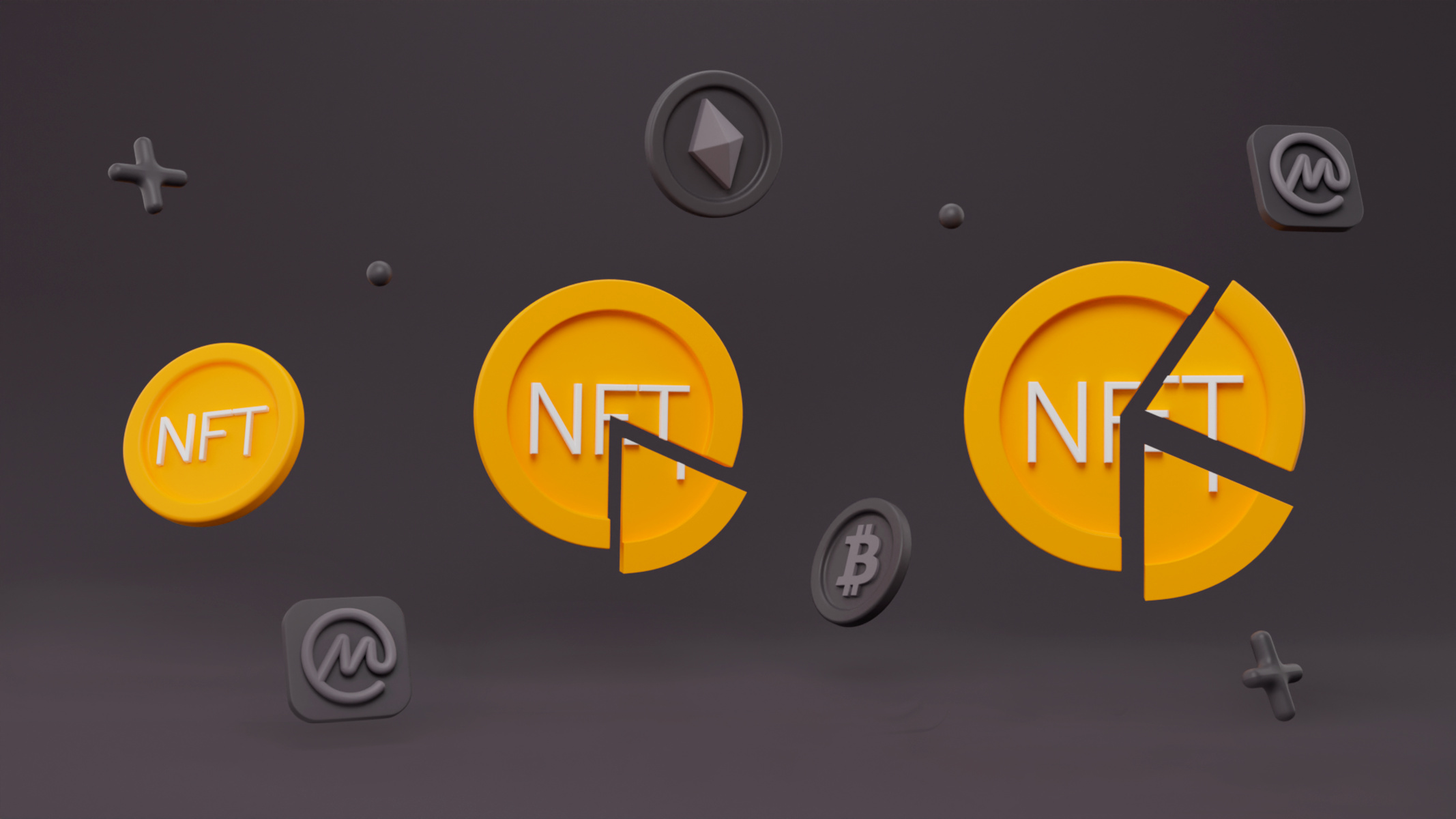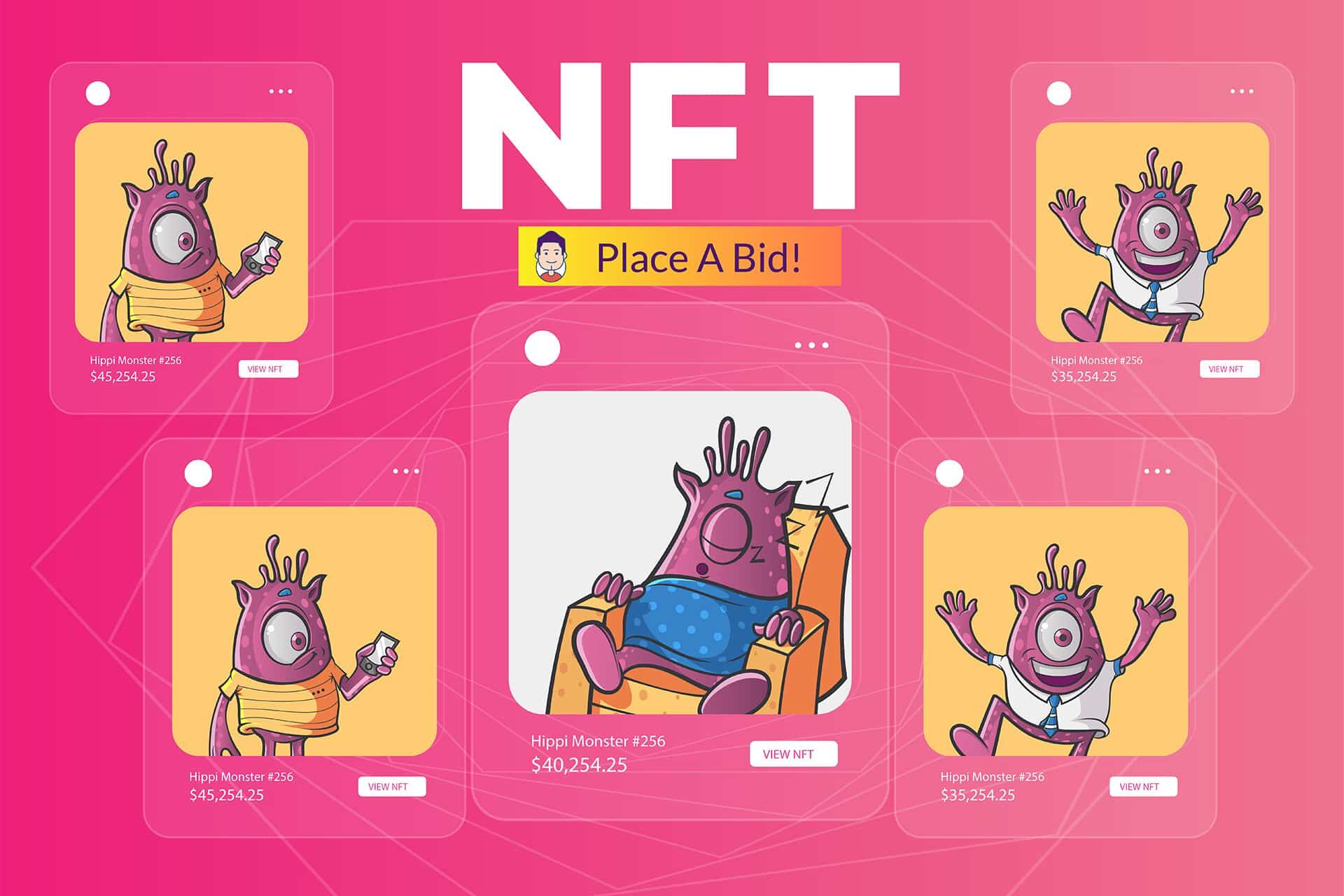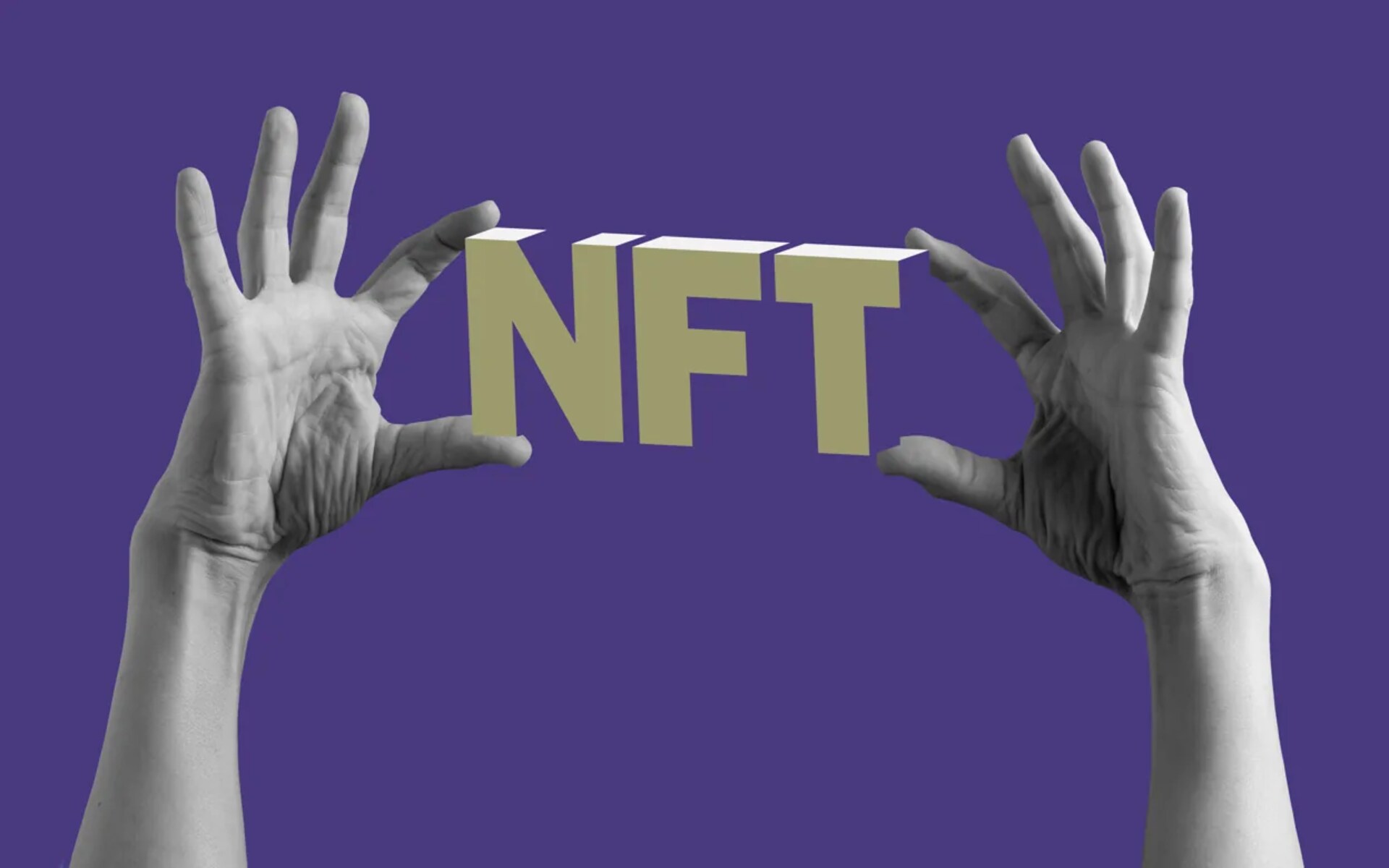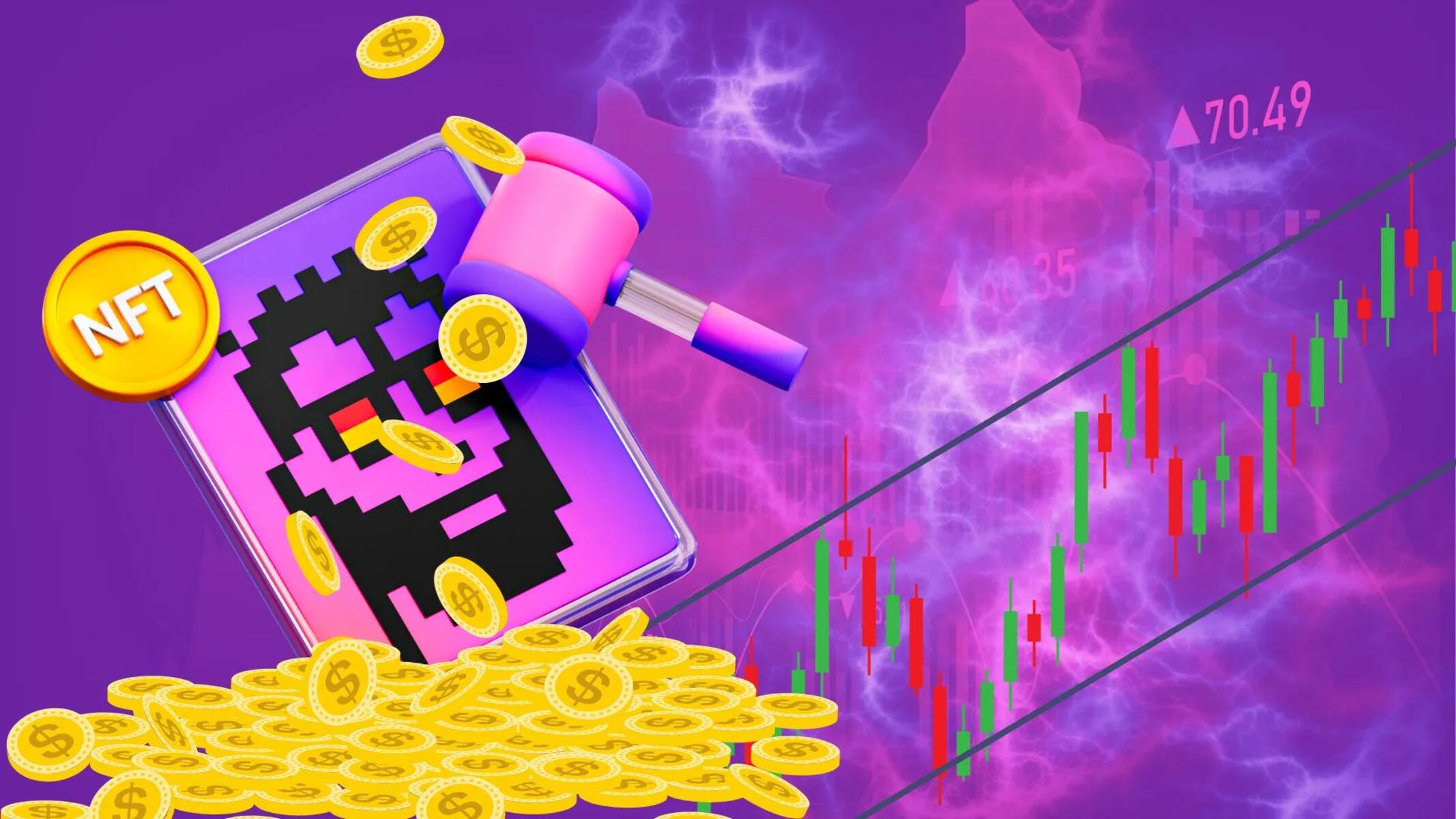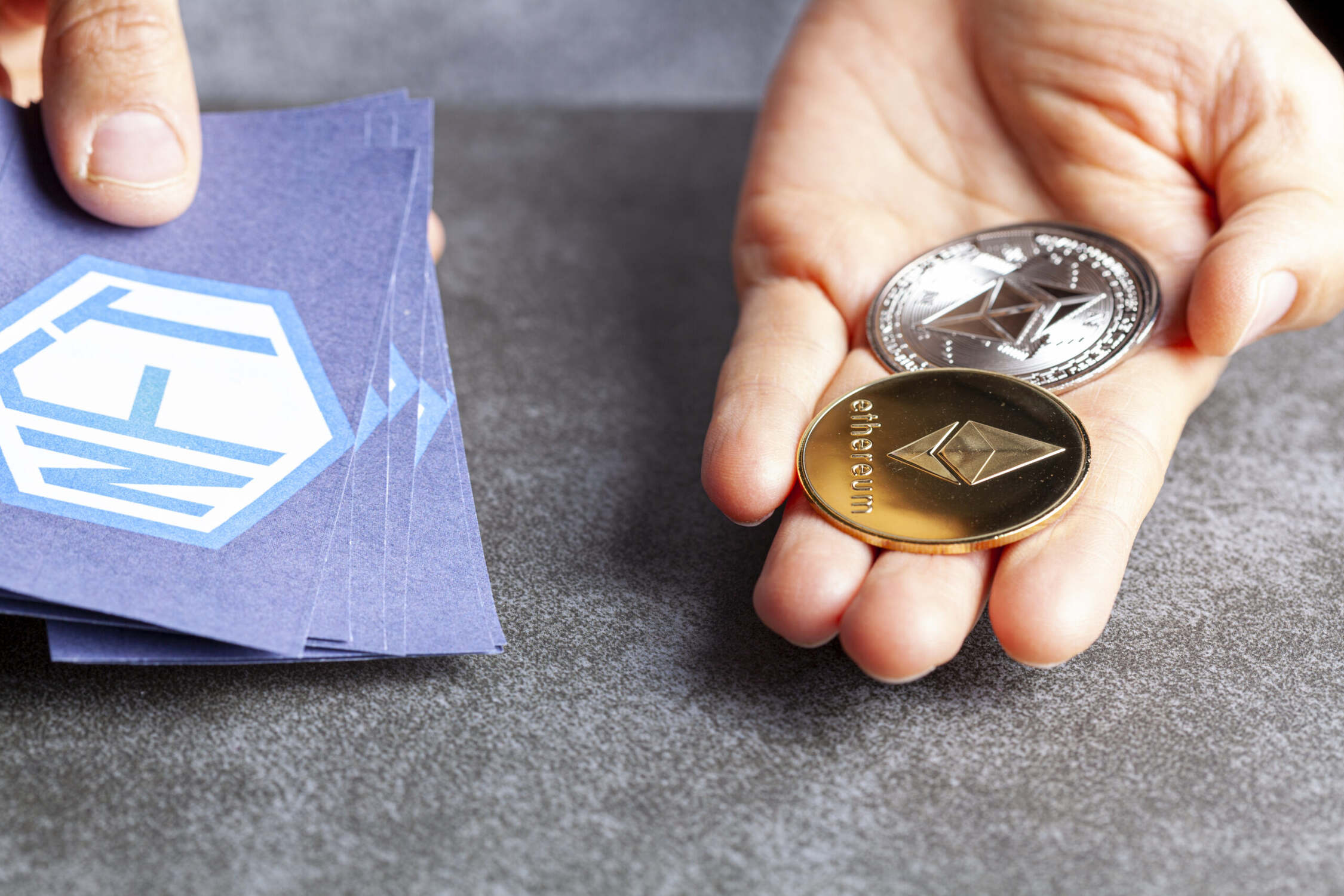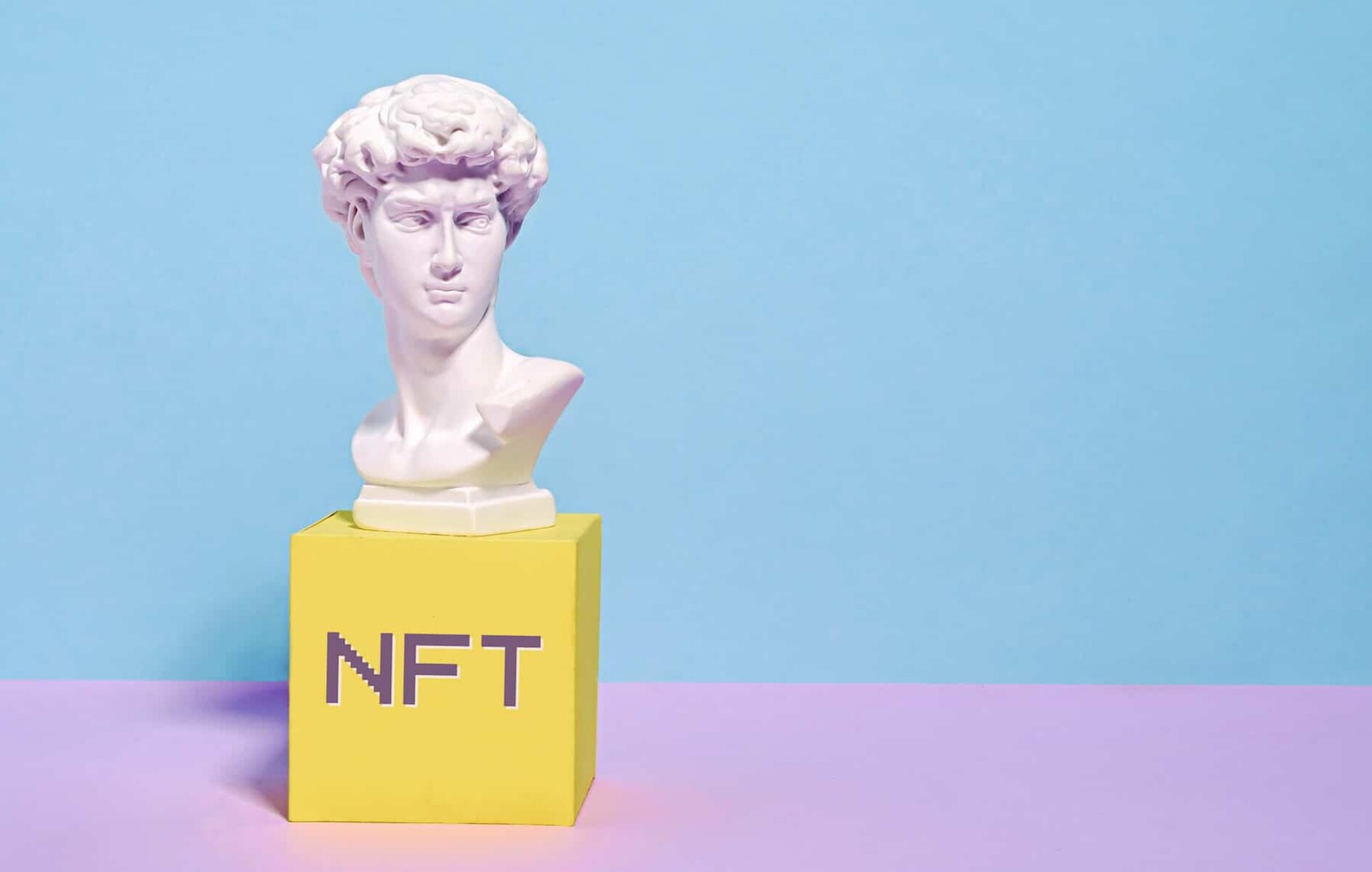Introduction
Welcome to the exciting world of NFT trading! NFTs, or non-fungible tokens, have taken the digital world by storm, offering a unique way to buy, sell, and trade digital assets. Whether you’re an artist looking to showcase your work or an investor seeking new opportunities, NFT trading opens up a whole new realm of possibilities.
But what exactly is NFT trading? How does it work, and how can you get started? In this article, we will explore the ins and outs of NFT trading, providing you with the knowledge and tools you need to navigate this emerging market successfully.
At its core, NFT trading involves the buying and selling of non-fungible tokens. These tokens are built on blockchain technology, which ensures their uniqueness, scarcity, and authenticity. Unlike cryptocurrencies such as Bitcoin or Ethereum, which are interchangeable and can be subdivided into smaller units, NFTs represent one-of-a-kind digital assets.
From digital art and collectibles to music and virtual real estate, NFTs can represent a wide range of digital assets. They can be bought, sold, and traded on various online platforms called NFT marketplaces where creators and investors come together to explore and transact.
The appeal of NFT trading lies in the potential for creators to monetize their digital creations and for investors to acquire unique and valuable assets. With the rise of digital art and the increasing interest in virtual experiences, NFTs have opened up a new avenue for artists to showcase and sell their work directly to a global audience, eliminating the need for intermediaries.
For investors, NFT trading offers the opportunity to own rare and exclusive digital assets that can appreciate in value over time. As with any investment, there are risks involved, but by understanding the market, doing thorough research, and staying informed, you can make informed decisions and potentially reap the rewards.
Now that we’ve covered the basics, it’s time to dive deeper into the world of NFT trading. In the following sections, we will guide you through the process of getting started with NFT trading, choosing the right marketplace, setting up your wallet, creating and minting your NFTs, valuing your assets, navigating the marketplace, marketing your NFTs, managing your portfolio, and providing some tips for successful NFT trading. So, let’s get started on this exciting journey!
What is NFT Trading?
NFT trading, or non-fungible token trading, refers to the buying, selling, and trading of unique digital assets represented by non-fungible tokens. These tokens are built on blockchain technology, providing a secure and transparent way to verify ownership and authenticity.
Unlike cryptocurrencies such as Bitcoin or Ethereum, which are fungible and can be exchanged on a one-to-one basis, NFTs are indivisible and represent one-of-a-kind assets. Each NFT contains unique metadata that distinguishes it from any other token, making it irreplaceable and unique in the digital space.
So, what can be represented as an NFT? The possibilities are virtually endless. NFTs can represent a wide range of digital assets, including:
- Digital Art: Artists can create and sell digital artwork as NFTs, allowing them to authenticate and sell their art directly to collectors, without the need for intermediaries like galleries or auction houses.
- Collectibles: NFTs can represent virtual collectibles, such as trading cards, virtual pets, or virtual items in online games. These collectibles can be bought, sold, and traded just like physical collectibles.
- Virtual Real Estate: Virtual worlds like Decentraland or Cryptovoxels offer virtual land ownership as NFTs, allowing users to build and monetize virtual spaces.
- Music and Videos: Musicians and content creators can release exclusive music tracks or videos as NFTs, providing a new revenue stream and direct engagement with fans.
- Sports Memorabilia: NFTs can be used to represent digital versions of sports memorabilia, such as game-worn jerseys or autographed items, giving fans a new way to collect and own cherished sports artifacts.
When it comes to NFT trading, the value of these digital assets can vary widely. Factors such as scarcity, demand, reputation of the creator, and the uniqueness of the asset all contribute to its perceived value. Digital art pieces from renowned artists, limited edition collectibles, or iconic moments in sports history are often highly sought after and can command significant prices in the NFT market.
One of the advantages of NFT trading is that it allows creators to retain ownership and control over their work. Through the use of smart contracts on the blockchain, creators can set royalty fees for subsequent sales of their NFTs, ensuring they receive a percentage of the profits even after the initial sale. This provides artists with a sustainable revenue model and incentivizes them to continue creating.
The NFT market is constantly evolving, with new projects, marketplaces, and developments emerging each day. As with any investment, it’s important to do your due diligence, research the market, and understand the risks involved before diving into NFT trading. By staying informed and being mindful of trends and market dynamics, you can make informed decisions and navigate this exciting and ever-changing space.
Understanding NFTs
In order to grasp the concept of NFT trading, it’s essential to have a solid understanding of what NFTs are and how they work. NFTs, or non-fungible tokens, are a form of digital asset that represent ownership of a unique item or piece of content. Unlike cryptocurrencies such as Bitcoin and Ethereum, which are interchangeable and can be subdivided into smaller units, NFTs are indivisible and cannot be exchanged on a one-to-one basis.
At the core of NFTs is blockchain technology, which provides a decentralized and immutable ledger to record the ownership and transaction history of each token. This ensures the authenticity and provenance of the digital asset, making it virtually impossible to counterfeit or tamper with.
Each NFT contains specific metadata that provides detailed information about the asset it represents. This metadata can include details such as the creator’s name, a description of the asset, associated images or videos, and any additional attributes that make the asset unique.
One of the defining characteristics of NFTs is their scarcity. While digital content can easily be replicated and distributed, NFTs introduce a level of scarcity by creating a unique token that represents a specific asset. This scarcity, coupled with the blockchain’s ability to verify authenticity, gives NFTs their value and collectible nature.
Another important aspect of NFTs is their transferability. Owners of NFTs can buy, sell, or trade their tokens on various online platforms called NFT marketplaces. These marketplaces act as a bridge between creators and collectors, facilitating the buying and selling of NFTs in a secure and transparent manner.
When it comes to the value of NFTs, it’s ultimately determined by the market. Factors such as the demand for the asset, the reputation of the creator, and the uniqueness of the content all play a role in determining its perceived value. The value of NFTs can be highly subjective and can fluctuate significantly over time.
It’s important to note that owning an NFT does not necessarily grant you copyright or intellectual property rights to the underlying content. While you may own the token that represents the asset, the creator retains the copyright unless specified otherwise.
As with any investment, it’s crucial to exercise caution and do thorough research before engaging in NFT trading. The NFT market is still relatively new and can be volatile, with rapid price fluctuations and emerging trends. By staying informed, understanding the nuances of NFTs, and vetting the reputation of marketplaces and creators, you can make informed decisions and navigate this exciting and dynamic space with confidence.
Getting Started with NFT Trading
If you’ve decided to dip your toes into the world of NFT trading, there are a few key steps to follow to get started. By following these steps, you’ll be well on your way to exploring the world of digital art, collectibles, and unique virtual assets.
1. Educate Yourself: Before diving into NFT trading, take the time to educate yourself about the basics of blockchain technology, NFTs, and the various marketplaces available. Understand how NFTs are created, how they are stored in digital wallets, and how transactions are conducted on the blockchain. Familiarize yourself with reputable sources of information, forums, and communities dedicated to NFTs.
2. Choose the Right Marketplace: Research and choose a reliable and reputable NFT marketplace to buy, sell, and trade NFTs. Some popular platforms include OpenSea, Rarible, and SuperRare. Each marketplace may have its own specific features, fee structures, and user communities, so consider your preferences and objectives when selecting a platform.
3. Set Up Your Wallet: NFTs are stored in digital wallets that are compatible with the blockchain on which they are created. One commonly used wallet for Ethereum-based NFTs is MetaMask. Create and set up your wallet, ensuring that you securely manage and protect access to it, as losing your wallet could result in the loss of your NFTs. Familiarize yourself with wallet functionalities such as connecting it to the marketplace, viewing your NFT collection, and initiating transactions.
4. Connect Your Wallet to the Marketplace: After setting up your wallet, connect it to the NFT marketplace of your choice. This will enable you to interact with the marketplace, initiate transactions, and manage your NFT collection directly from your wallet. Follow the instructions provided by the marketplace to connect your wallet seamlessly.
5. Do Your Research: Explore the marketplace thoroughly, browse the various categories and collections, and research the artists and creators behind the NFTs that catch your interest. Look into their reputation, track record, and previous sales to gauge the potential value of their offerings. Pay attention to details such as the rarity, condition, and uniqueness of the NFTs you are considering.
6. Create a Buying Strategy: Develop a buying strategy based on your budget, interests, and investment goals. Determine the types of NFTs you want to focus on, whether it’s digital art, collectibles, music, or other digital assets. Set a budget for your NFT purchases and establish your criteria for evaluating the value and potential appreciation of an NFT.
7. Start Small: As a beginner in NFT trading, it’s advisable to start with smaller investments and gain experience and knowledge as you go. Consider purchasing NFTs from emerging artists or those with lower prices to build your collection and understand the dynamics of the market. Take the time to learn from your transactions and interactions on the marketplace.
8. Engage with the Community: Participate in the NFT community by joining forums, attending virtual events, and engaging with fellow collectors, artists, and enthusiasts. Learning from others, sharing insights, and networking can provide valuable opportunities and deepen your understanding of the NFT space.
Remember, NFT trading involves risks, and the market can be highly volatile. Do your due diligence, stay updated on market trends, and take calculated risks as you navigate this exciting world. By following these steps and continuously learning and adapting, you’ll be well-equipped to embark on your NFT trading journey.
Choosing the Right Marketplace
When it comes to NFT trading, choosing the right marketplace is crucial to your success. The marketplace you select will not only determine the range of NFTs available to you but also impact factors such as fees, user experience, and community engagement. Here are some key considerations when choosing an NFT marketplace:
1. Reputation and Trustworthiness: Research the reputation and track record of the marketplace. Look for platforms that have established themselves as reputable, secure, and trustworthy. Check online reviews, browse user feedback, and verify their standing in the NFT community. A reliable marketplace will prioritize the security of your transactions and the authenticity of the NFTs being traded.
2. Diversity of Offerings: Consider the variety and range of NFTs available on the marketplace. Different marketplaces may specialize in specific types of NFTs, such as digital art, collectibles, or virtual real estate. Choose a marketplace that aligns with your interests and objectives, ensuring you have access to the types of NFTs you’re most interested in trading or collecting.
3. User Interface and Experience: Evaluate the user interface and experience offered by the marketplace. A user-friendly interface and intuitive navigation can greatly enhance your trading experience and make it easier to browse, search, and interact with the available NFTs. Look for features such as advanced search filters, categories, and sorting options to streamline your browsing process.
4. Fees and Costs: Consider the fee structure of the marketplace, including listing fees, transaction fees, and platform fees. Compare the fees of different marketplaces to find the most cost-effective options. Keep in mind that fees can vary based on the platform, the blockchain network on which the marketplace operates, and the value of the transactions. Understanding the fee structure will help you evaluate the potential costs and profitability of your NFT trading activities.
5. Community and Networking: Assess the strength and vibrancy of the marketplace’s community. A marketplace with an active community can provide networking opportunities, educational resources, and exposure to a wider range of artists and collectors. Look for marketplaces that facilitate community engagement through forums, social media channels, events, and collaborations.
6. Secondary Market Support: Check if the marketplace supports secondary market trading. A secondary market allows you to buy and sell NFTs that are already in circulation, providing more opportunities for trading and liquidity. Ensure that the marketplace has a robust infrastructure for secondary market trading, including bid/ask functionalities and reliable transaction processing.
7. Platform Policies: Familiarize yourself with the platform’s terms of service, guidelines, and policies. Understand the rights and responsibilities of buyers and sellers, the policies surrounding refunds and disputes, and any restrictions imposed by the marketplace. Ensure that the platform’s policies align with your trading objectives and risk tolerance.
By carefully considering these factors, you can make an informed decision and choose the right NFT marketplace to meet your trading needs. Remember, selecting the right marketplace is not a one-size-fits-all approach. It’s important to find a platform that aligns with your interests, trading goals, and values as you embark on your journey in the NFT trading space.
Setting Up Your Wallet
Setting up a digital wallet is a crucial step when venturing into the world of NFT trading. Your wallet will serve as your secure repository for storing, managing, and transacting with your NFTs. Here’s what you need to know to set up your wallet:
1. Choose a Compatible Wallet: There are numerous digital wallets available, each compatible with different blockchain networks. Select a wallet that supports the blockchain on which the NFTs you intend to trade are created. For example, if you’re trading NFTs on the Ethereum blockchain, popular wallets like MetaMask, MyEtherWallet, or Trust Wallet are compatible options.
2. Create Your Wallet: Follow the instructions provided by the wallet provider to create your wallet. You’ll typically be asked to choose a strong password and, in some cases, write down a recovery phrase or mnemonic seed. Safeguard this information as it is critical for accessing your wallet and should be stored securely offline.
3. Secure Your Wallet: Take necessary steps to strengthen the security of your wallet. Enable two-factor authentication (2FA) if available, which adds an extra layer of protection. Regularly update your wallet software to benefit from security patches and bug fixes. Be cautious of phishing attempts and only access your wallet through official channels.
4. Connect to the Blockchain Network: Once your wallet is created, connect it to the blockchain network on which the marketplace and NFTs operate. This connection will allow you to interact with the marketplace, browse NFTs, and initiate transactions directly from your wallet. Refer to the wallet’s documentation or settings to establish the connection.
5. Add Funds: To participate in NFT trading, you’ll need to have cryptocurrency funds in your wallet. If you’re trading on Ethereum-based marketplaces, you’ll need Ether (ETH) to pay for transaction fees and purchase NFTs. Purchase cryptocurrency from a reputable exchange and transfer it to your wallet’s public address. Ensure you’re sending the correct cryptocurrency to the wallet associated with the blockchain network.
6. Navigate Wallet Functionalities: Familiarize yourself with the features and functionalities of your chosen wallet. Learn how to view your NFT collection, check transaction history, and manage your digital assets. Explore additional features such as gas fee adjustment (for Ethereum-based wallets) to optimize transaction costs, importing other wallets, or integrating with hardware wallets for added security.
7. Keep Your Wallet Updated and Backed Up: Regularly update your wallet software to benefit from the latest security features and enhancements. In addition to software updates, regularly back up your wallet’s recovery phrase or mnemonic seed. This backup will serve as a recovery option in case of wallet loss or device failure.
Remember, your wallet is your digital asset vault, so it’s crucial to take security seriously. Protect your wallet by utilizing strong passwords, enabling 2FA, keeping software updated, and being vigilant against phishing attempts.
By setting up your wallet correctly and familiarizing yourself with its features, you’ll have a secure and convenient tool to engage in NFT trading. Your wallet will allow you to seamlessly manage your NFT collection, initiate transactions, and participate in the exciting and dynamic world of NFT trading.
Creating and Minting Your NFTs
If you’re an artist or creator looking to showcase your work in the form of NFTs, or a collector interested in minting your own unique NFTs, the process of creating and minting NFTs is a crucial step. Here’s a guide to help you navigate the process:
1. Prepare Your Digital Asset: Start by creating or selecting the digital asset you want to turn into an NFT. This can be digital artwork, music, a video, or any other unique digital content. Ensure that your digital asset meets the specifications and requirements of the NFT marketplace or blockchain network you plan to use for minting.
2. Choose a Suitable Blockchain Network: Select the blockchain network on which you want to mint your NFT. Ethereum is currently the most popular choice for NFT minting, but there are other networks like Binance Smart Chain, Flow, and others that provide NFT minting capabilities. Consider factors such as gas fees, transaction speed, and community adoption when making your decision.
3. Select a Minting Platform: Research and choose a minting platform that operates on your chosen blockchain network. Popular platforms for Ethereum-based NFT minting include OpenSea, Rarible, and Mintable. Evaluate factors such as platform fees, user interface, and community engagement to find the best fit for your needs.
4. Connect Your Wallet to the Minting Platform: Connect your digital wallet to the chosen minting platform. This connection will enable you to sign transactions and interact with the platform to mint your NFTs. Follow the instructions provided by the platform to establish the connection with your wallet.
5. Upload and Customize Your NFT: Upload your digital asset to the minting platform. Follow the platform’s instructions to provide necessary information such as the title, description, and any additional metadata associated with your NFT. Customize elements such as the thumbnail image and set the desired properties for your NFT, such as royalties and limited editions (if applicable).
6. Set a Price or Auction: Determine whether you want to set a fixed price for your NFT or put it up for auction. Setting a fixed price allows potential buyers to purchase your NFT directly, while auctions can create excitement and potentially drive up the price through bidding. Set the terms and duration for your auction if you choose this option.
7. Pay Attention to Gas Fees: Gas fees are transaction costs associated with minting and interacting with NFTs on the blockchain. Gas fees can vary depending on network congestion and market conditions. Ensure that you have enough cryptocurrency funds in your wallet to cover the gas fees associated with the minting process.
8. Review and Confirm: Before finalizing the minting process, thoroughly review the details of your NFT listing, including all the metadata, pricing, and customization options. Once you are satisfied with the information provided, confirm the minting transaction using your digital wallet.
9. Promote and Share Your NFT: After minting your NFT, promote it through social media, online communities, and relevant platforms to attract potential buyers or collectors. Engage with the NFT community, share insights about your creation, and leverage your network to increase visibility and interest in your NFT.
Remember that minting an NFT does not guarantee its sale or value appreciation. The success of your NFTs will depend on various factors such as market demand, the reputation of the creator, the uniqueness of the asset, and the overall dynamics of the NFT market.
By following these steps, you can create and mint your own NFTs, showcasing your digital creations to a global audience and potentially monetizing your unique content in the exciting world of NFT trading.
Pricing and Valuing Your NFTs
Pricing and valuing your NFTs is a crucial aspect of NFT trading, whether you’re an artist looking to sell your digital creations or an investor assessing the potential value of an NFT. Here are some factors to consider when determining the price and value of your NFT:
1. Scarcity and Rarity: The scarcity and rarity of your NFT play a significant role in its value. If your NFT is a limited edition or has unique qualities that make it stand out from others, it may be perceived as more valuable. Collectors often value NFTs that are rare and hard to come by.
2. Creator Reputation: The reputation and recognition of the creator can impact the value of an NFT. Established and well-known artists or creators often command higher prices for their NFTs due to their track record, influence, and fan base. Collectors may view NFTs from renowned creators as more valuable and desirable.
3. Demand and Market Trends: Market demand and trends can significantly influence the value of NFTs. Monitor the market to identify which types of NFTs are in high demand and align your pricing strategy accordingly. Stay informed about emerging trends, popular themes, and evolving preferences within the NFT community.
4. Provenance and Authenticity: The blockchain technology underlying NFTs provides provenance and authenticity, which can contribute to their value. Buyers are often willing to pay a premium for NFTs with a verifiable and transparent history, ensuring the originality and uniqueness of the asset.
5. Quality of the Digital Asset: The quality and uniqueness of the digital asset itself can influence its value. Take into consideration factors such as the artistic appeal, technical skill, and innovation demonstrated in the creation. NFTs that represent high-quality and visually captivating artwork or content may be perceived as more valuable.
6. Utility and Functionality: Some NFTs offer utility or functionality beyond their aesthetic value. For example, they may unlock access to exclusive content, provide membership privileges, or offer utility within virtual worlds or games. NFTs with additional utility or functionality can command higher prices due to the added benefits they provide.
7. Comparables and Market Analysis: Analyze the pricing and sales history of similar NFTs to assess the reasonable market value of your NFT. Look for comparable NFTs in terms of artistic style, rarity, and creator reputation. Consider the average selling price, trading volume, and overall market activity to gauge a suitable price range for your NFT.
8. Emotional and Cultural Value: Emotional and cultural value can also impact the perceived worth of an NFT. Some NFTs hold sentimental value or represent significant cultural moments, making them highly desirable for collectors. Factors such as historical significance, social relevance, and emotional connection can contribute to the value of an NFT.
Remember that pricing and valuing NFTs can be subjective, and fluctuations in the market are common. It’s crucial to stay informed, adapt to changing market conditions, and engage with the NFT community to understand the latest trends and dynamics.
When determining the price of your NFT, consider factors such as the costs involved in creating and marketing the asset, the time invested, and your own financial goals. Consider starting with a reasonable price that reflects the value you believe your NFT holds and adjust as you gather feedback, generate interest, and assess market demand.
By carefully evaluating these factors and finding the right balance, you can effectively price and value your NFTs to attract potential buyers and maximize your success in the dynamic NFT trading landscape.
Navigating the Marketplace
Navigating the NFT marketplace is essential to your success as an NFT trader or collector. These marketplaces serve as platforms where buyers and sellers come together to transact NFTs. Here are some tips to help you navigate the marketplace effectively:
1. Explore Different Marketplaces: Start by exploring different NFT marketplaces to understand their offerings, features, and user experience. Popular marketplaces include OpenSea, Rarible, SuperRare, and NBA Top Shot. Each marketplace has its unique characteristics, user interface, and community, so spend some time browsing and comparing to find the ones that align with your preferences and objectives.
2. Research Artists and Creators: Take the time to research the artists, creators, and sellers on the marketplace. Learn about their background, reputation, and track record. Look for artists whose style resonates with you or creators with a proven sales history. Evaluating the reputation and quality of the creators can help you identify potential valuable NFTs and ensure a positive trading experience.
3. Stay Informed: Stay updated on the latest trends, news, and developments in the NFT space. Follow industry publications, join relevant forums and communities, and engage with the NFT community on social media platforms. By staying informed, you’ll be able to identify emerging artists, popular collections, and new opportunities for buying or trading NFTs.
4. Filter and Refine Your Search: To efficiently navigate the marketplace, make use of the search filters and categories provided. Utilize tags, keywords, and sorting options to narrow down your search for NFTs based on criteria such as price range, artwork style, creator, or specific collection. These filters can help you find the NFTs that align with your interests and investment goals.
5. Study Listing Details: When evaluating NFT listings, pay attention to the details provided by the sellers. Review the metadata, description, and any additional information about the NFT. Look for key information such as the edition number, rarity, provenance, and any special features or bonuses associated with the NFT. This information will help you make informed decisions and assess the value of the NFT.
6. Analyze Sales History: Analyzing the sales history of particular NFTs or artists can provide valuable insights into market trends and demand. Look for pricing patterns, trading volumes, and any notable sales or increases in value over time. By gathering this information, you can make better-informed decisions regarding the potential value and investment opportunities within the marketplace.
7. Engage with the Community: Participate in the marketplace community to gain insights, network with like-minded individuals, and learn from experienced traders. Join discussions, comment on listings, and share your thoughts and feedback. Engaging with the community can provide valuable information, build relationships, and enhance your overall experience with the marketplace.
8. Manage Your Portfolio: As you acquire NFTs, manage your portfolio effectively within the marketplace. Utilize tools provided by the marketplace to organize, categorize, and track your NFT collection. Regularly review and reassess your holdings, considering factors such as market dynamics, value appreciation, and potential selling or trading opportunities.
Remember, the NFT marketplace is dynamic and ever-evolving. It’s essential to continuously adapt and learn from your experiences and stay connected with the community to stay ahead of market trends. By effectively navigating the marketplace, you’ll be better equipped to make informed decisions and capitalize on the opportunities presented in the exciting world of NFT trading.
Marketing Your NFTs
Marketing plays a crucial role in the success of your NFTs. To effectively sell your NFTs or gain recognition as an artist, you need to implement a solid marketing strategy. Here are some key steps to market your NFTs:
1. Create a Compelling Story: Develop a captivating narrative around your NFTs. Explain the inspiration, technique, or concept behind your creation. Share your artistic journey or the story behind the content. A compelling story can make your NFT more engaging and memorable, attracting potential buyers and collectors.
2. Utilize Social Media: Leverage social media platforms to showcase your NFTs and build a following. Create dedicated accounts on platforms like Twitter, Instagram, and Discord to promote your NFTs and interact with your audience. Share images, videos, and behind-the-scenes content to engage and connect with potential buyers or collectors.
3. Collaborate with Influencers: Collaborate with influencers and notable figures in the NFT community. Partnering with influencers who align with your style or niche can expose your NFTs to a wider audience. Engage in meaningful collaborations, joint projects, or featured artist initiatives to amplify your reach and attract new followers or buyers.
4. Participate in Virtual Events: Attend and participate in virtual events, conferences, and exhibitions dedicated to NFTs. Showcase your NFTs, engage with attendees, and connect with potential buyers, collectors, and fellow artists. Virtual exhibitions and panel discussions can provide valuable exposure and networking opportunities within the NFT community.
5. Engage with the Community: Engage actively in NFT-related communities, forums, and social media groups. Participate in discussions, share insights, and provide value to the community. Interact with other artists, collectors, and enthusiasts to build relationships and foster a loyal fan base. Genuine engagement can create awareness and generate interest in your NFTs.
6. Offer Limited Editions or Exclusivity: Create a sense of exclusivity and scarcity by offering limited editions of your NFTs. Consider creating different editions or variations of your artwork or content to cater to different price points and collector preferences. Limited editions can enhance the perceived value of your NFTs and generate a sense of urgency among potential buyers.
7. Engage with Feedback and Comments: Actively respond to feedback, comments, and inquiries from potential buyers or collectors. Engaging in meaningful conversations demonstrates your commitment and builds trust. Promptly address questions, concerns, or requests for additional information to establish a positive reputation within the community.
8. Optimize Your Marketplace Listings: Pay attention to the details of your NFT listings on the marketplace. Use high-quality images or videos to showcase your NFTs. Craft compelling titles, descriptions, and tags to make your listings discoverable. Highlight any unique features or benefits associated with your NFTs to attract potential buyers.
9. Offer Special Incentives: Consider offering special incentives or perks to potential buyers. This could include bonus content, access to exclusive events, or loyalty rewards. Providing additional value beyond the NFT itself can entice buyers and differentiate your offerings from others.
10. Build an Email List: Create an email list of interested individuals who want to stay updated on your NFT releases, collaborations, or future projects. Regularly communicate with your email subscribers, sharing progress updates, behind-the-scenes content, or exclusive offers. Establishing a direct line of communication can help you nurture relationships and generate repeat buyers.
Remember, building a successful marketing strategy for your NFTs takes time and persistence. Continuously adapt and refine your approach based on the feedback and results you receive. By effectively marketing your NFTs, you can increase visibility, attract potential buyers, and enhance your overall success in the competitive NFT marketplace.
Managing Your NFT Portfolio
Properly managing your NFT portfolio is essential for success in the world of NFT trading. As an NFT trader or collector, managing your portfolio effectively ensures that you stay organized, make informed decisions, and optimize your trading activities. Here are some key tips to help you manage your NFT portfolio:
1. Establish Clear Goals: Define your goals and objectives for your NFT portfolio. Consider whether you want to focus on collecting, investing, or a combination of both. Establishing clear goals will help guide your decision-making process and ensure that you stay aligned with your overall strategy.
2. Track Your NFTs: Keep a comprehensive record of your NFTs, including details such as the title, creator, acquisition date, purchase price, and any additional relevant information. Consider using spreadsheets, dedicated portfolio management tools, or blockchain-based solutions to help you stay organized and keep track of your assets.
3. Monitor Market Trends: Stay informed about market trends, shifts, and developments in the NFT space. Regularly research and analyze market data, trading volumes, and average prices to identify patterns, opportunities, and emerging trends. This information will help you make informed decisions and adjustments to your portfolio.
4. Assess and Rebalance: Periodically reassess your NFT portfolio and rebalance as necessary. Consider factors such as the performance of your NFTs, changes in market dynamics, and your investment goals. Determine whether adjustments, such as buying or selling NFTs, are needed to optimize your portfolio in line with your objectives.
5. Stay Engaged with the Community: Actively engage with the NFT community to stay connected and informed. Participate in discussions, forums, and social media groups dedicated to NFTs. Networking with fellow collectors, artists, and traders can provide valuable insights, opportunities for collaboration, and a deeper understanding of the market.
6. Consider Diversification: Explore opportunities to diversify your NFT portfolio. Consider acquiring NFTs from different artists, genres, or collections. Diversification helps mitigate risk and ensures that your portfolio is not overly dependent on specific assets or creators. Be mindful of balancing your investments across a range of NFTs to achieve a diversified portfolio.
7. Stay Mindful of Storage and Security: Ensure the safety and security of your NFTs by implementing best practices for storage. Be cautious of phishing attempts and only access your wallet through official channels. Consider using hardware wallets for added security. Regularly back up the information necessary to access your NFTs, such as wallet recovery phrases or private keys.
8. Continuously Educate Yourself: As the NFT space evolves, ongoing education is key to managing your portfolio effectively. Stay updated on new releases, advancements in technology, and changes in market dynamics. Participate in webinars, workshops, and educational resources to expand your knowledge and make informed decisions.
9. Be Mindful of Tax and Legal Considerations: Understand the tax and legal implications of owning and trading NFTs in your jurisdiction. Consult with professionals or tax advisors to ensure compliance with applicable regulations and to optimize your tax strategy. Keeping accurate records and understanding the tax implications of your transactions is crucial.
By effectively managing your NFT portfolio, you can optimize your trading activities, adapt to market trends, and maximize the potential of your investments. Regularly reassess your goals, stay informed, and approach portfolio management with a disciplined and strategic mindset to achieve long-term success in the NFT space.
Tips for Successful NFT Trading
Navigating the world of NFT trading successfully requires a combination of knowledge, strategy, and adaptability. Whether you’re an artist looking to sell your digital creations or an investor seeking opportunities, here are some tips to help you thrive in the NFT market:
1. Do Your Research: It’s crucial to research and understand the NFT market before diving in. Stay updated on the latest trends, emerging artists, and notable sales. Familiarize yourself with the different marketplaces, blockchain networks, and relevant communities. The more informed you are, the better equipped you will be to make educated decisions.
2. Set Realistic Expectations: Understand that NFT trading can be volatile, and results may vary. Not every NFT will skyrocket in value, and it’s important to manage your expectations. Approach NFT trading as a long-term investment or creative pursuit, rather than solely focusing on immediate financial gains.
3. Network and Engage: Build connections within the NFT community by participating in forums, attending virtual events, and engaging with creators, collectors, and enthusiasts. Networking can lead to collaborations, learning opportunities, and exposure to new NFT projects and trends.
4. Manage Risk: Allocate your funds wisely and diversify your NFT portfolio to mitigate risk. Avoid putting all your eggs in one basket by investing in a range of artists, genres, or collections. Consider your risk tolerance and invest within your means.
5. Evaluate Creator Authenticity: Verify the authenticity and credibility of creators before investing in their NFTs. Review their previous works, reputations within the community, and the engagement they have with their audience. Investing in NFTs from reputable creators can increase the potential value and desirability of your collection.
6. Follow Market Trends: Stay current with market trends, hot collections, or emerging artists. Be aware of what’s gaining traction and adapt your trading strategies accordingly. By staying informed, you can identify and capitalize on opportunities within the constantly evolving NFT market.
7. Stay Organized: Keep track of your NFT holdings, transactions, and important details such as acquisition dates and prices. Use tools like spreadsheets or dedicated portfolio management platforms to stay organized. Regularly review and reassess your holdings to make informed decisions about potential buying or selling opportunities.
8. Be Mindful of Gas Fees: Consider the transaction costs associated with minting, buying, or selling NFTs, especially on blockchain networks like Ethereum. Keep an eye on gas fees and evaluate their impact on your trading decisions. There may be times when it’s more cost-effective to wait for lower gas fees or explore alternative blockchain networks.
9. Collect What You Love: Follow your passion when selecting NFTs to invest in or collect. Choose pieces that resonate with you, align with your interests, or hold personal significance. NFT trading can be more rewarding when you genuinely appreciate the art or content you are investing in.
10. Stay Mindful of Legal and Tax Obligations: Understand and comply with any legal and tax obligations related to NFT trading in your jurisdiction. Seek guidance from professionals or tax advisors to ensure proper compliance and optimize your financial approach to NFT trading.
Remember, successful NFT trading requires continuous learning, adaptability, and a long-term perspective. Embrace the evolving nature of the NFT market, take calculated risks, and approach trading with a blend of passion and strategic decision-making. By following these tips, you can navigate the NFT market with confidence and increase your chances of reaching your desired goals.
Closing Thoughts
As you dive into the world of NFT trading, it’s important to approach it with a blend of creativity, strategy, and adaptability. The NFT market is dynamic and constantly evolving, presenting opportunities and challenges for both artists and investors. By following the tips outlined in this article, you can increase your chances of success and navigate the intricacies of NFT trading effectively.
Whether you’re a creator looking to showcase your digital art or an investor seeking valuable assets, understanding the fundamentals of NFTs, choosing the right marketplace, and setting up a secure wallet are essential first steps. From there, pricing and valuing your NFTs, navigating the marketplace, and implementing effective marketing strategies will help you stand out in the competitive NFT landscape.
Managing your NFT portfolio with care and continuously educating yourself about market trends, emerging artists, and blockchain technology will enable you to adapt to changing market dynamics and optimize your trading activities. Remember, NFT trading involves risks, and it’s important to do your own research, consult professionals where necessary, and make informed decisions based on your own circumstances and goals.
Lastly, embrace the connections and opportunities within the NFT community. Engage with fellow artists, collectors, and enthusiasts. Collaborate, share insights, and learn from others to expand your knowledge and network. The relationships you build can be invaluable for growth, both personally and professionally, in the world of NFT trading.
As the NFT landscape continues to evolve, always stay true to your own vision, passion, and interests. NFTs offer a new and exciting way to interact with digital content, democratize creativity, and redefine the art and asset ownership landscape. With creativity, knowledge, and strategic decision-making, you can navigate this ever-changing space and make your mark as an NFT trader or collector.









